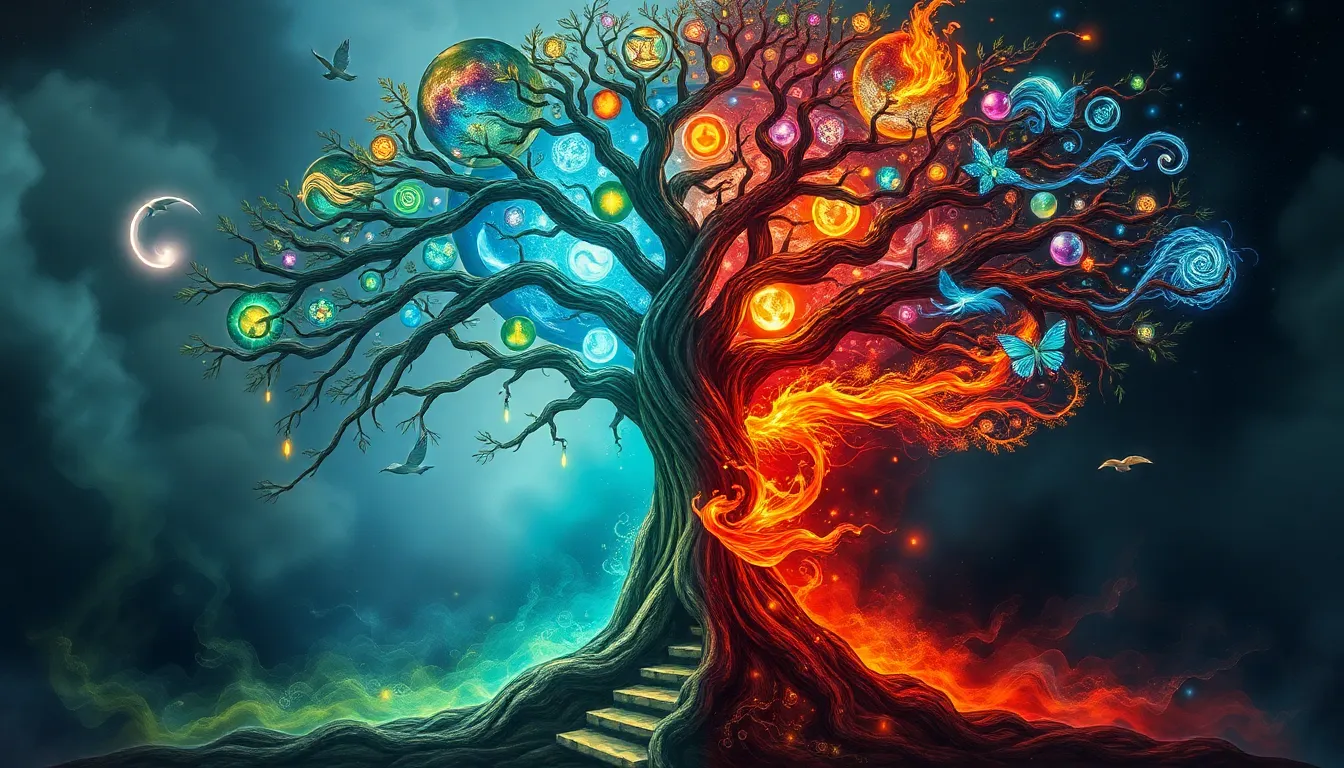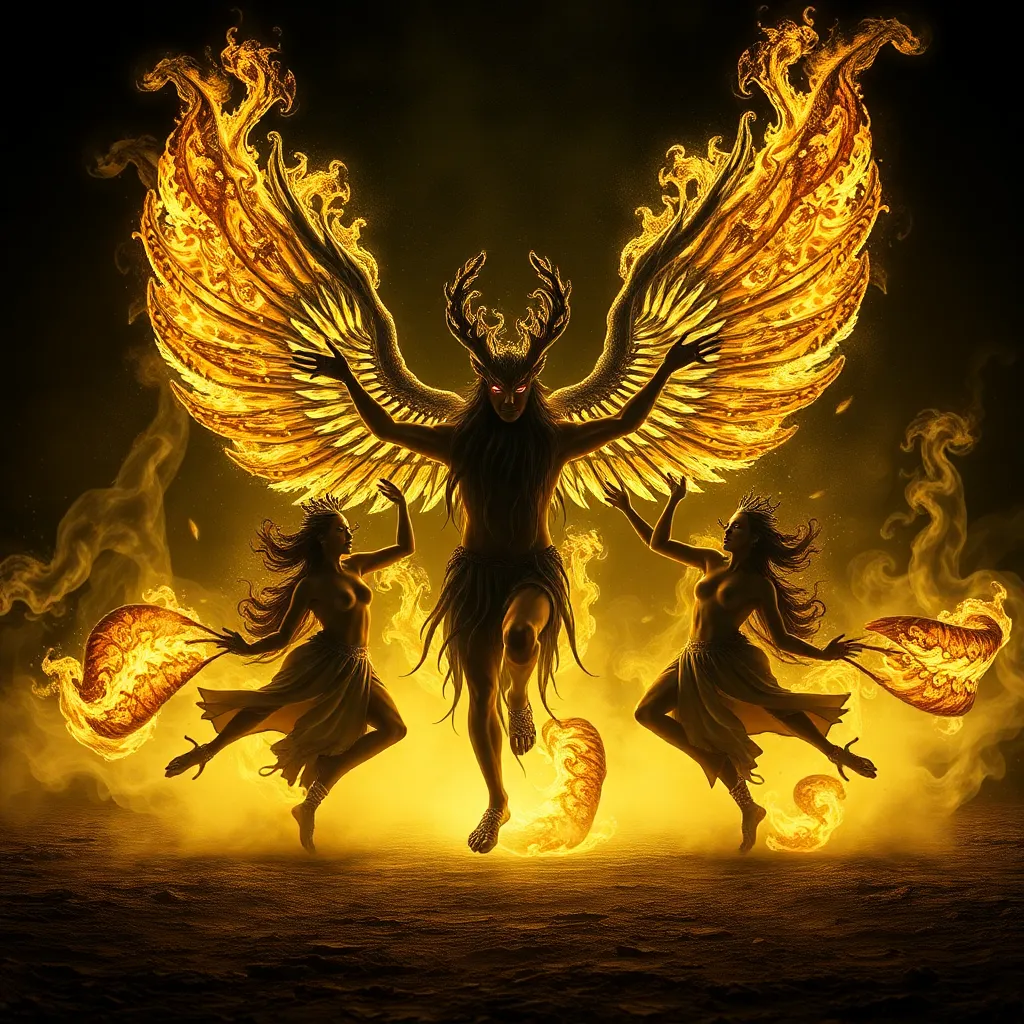The Myth of the Phoenix: How a Bird Rose from the Ashes
Introduction to the Phoenix Myth
The Phoenix is a legendary bird that symbolizes rebirth and renewal, captivating the imagination of countless generations. Often depicted as a magnificent bird with vibrant plumage, the Phoenix is known for its ability to rise from its own ashes, embodying the idea of resurrection and the cyclical nature of life. This myth has transcended cultural boundaries, appearing in various forms throughout history, from ancient mythologies to modern storytelling.
Historical Origins of the Phoenix Legend
The origins of the Phoenix myth can be traced back to several ancient civilizations:
- Ancient Egyptian roots: The Bennu bird, often associated with the sun and creation, is believed to be a precursor to the Phoenix myth.
- Greek interpretations: The Greek historian Herodotus described a bird that would ignite itself in flames every 500 years, only to rise anew from its ashes.
- Other cultural references: In India, the bird Garuda is considered a symbol of power and transformation, while in Middle Eastern cultures, similar themes of resurrection are prevalent.
Symbolism of the Phoenix in Various Cultures
The Phoenix is rich in symbolism, representing various concepts across different cultures:
- Immortality: The Phoenix is often seen as a symbol of eternal life, signifying the endless cycle of birth, death, and rebirth.
- Fire and Ashes: Fire represents transformation, while ashes symbolize the remnants of the past, allowing for new beginnings.
- Alchemy: In alchemical traditions, the Phoenix signifies the process of transformation and the attainment of enlightenment through trials.
The Lifecycle of the Phoenix: Birth, Death, and Resurrection
The lifecycle of the Phoenix is a captivating narrative of renewal:
- Birth: The Phoenix is born from the essence of its predecessors, often depicted as emerging from a nest of aromatic spices.
- Death: At the end of its life, the Phoenix ignites in a spectacular flame, consuming itself in the fire.
- Resurrection: From the ashes, a new Phoenix emerges, symbolizing the cyclical nature of existence.
This lifecycle resonates with many other mythological creatures, such as the Ouroboros or the Dragon, which also embody themes of renewal and transformation.
The Phoenix in Literature and Art
The Phoenix has been a significant motif in literature and art through the ages:
- Ancient texts: References to the Phoenix can be found in works such as the Bible and the writings of classical poets.
- Modern literature: The Phoenix continues to inspire contemporary authors, appearing in fantasy novels and allegorical tales.
- Artistic representations: Artists across different eras have depicted the Phoenix, showcasing its beauty and the dramatic moment of resurrection.
- Contemporary media: The Phoenix motif appears in films, television shows, and graphic novels, symbolizing hope and resilience in various narratives.
Psychological Interpretation of the Phoenix Myth
The Phoenix myth offers valuable insights into personal growth and resilience:
- Influence on personal growth: The concept of ‘rising from the ashes’ resonates with individuals facing adversity, encouraging them to embrace change.
- Psychological concepts: In psychology, the Phoenix symbolizes the journey of transformation and the potential for renewal after trauma.
Many individuals embody the Phoenix spirit, demonstrating remarkable resilience in the face of challenges. Examples include survivors of natural disasters or personal hardships who rebuild their lives stronger than before.
The Phoenix in Modern Culture
The Phoenix symbol has found its place in various modern contexts:
- Branding: Many companies utilize the Phoenix in their logos to convey a message of renewal and innovation.
- Social movements: The Phoenix serves as a metaphor for activism, representing the idea of rising against oppression and striving for change.
- Popular quotes: Phrases like “rising from the ashes” have permeated everyday language, inspiring individuals and communities alike.
The Phoenix and Environmental Themes
The Phoenix myth also holds relevance in discussions on environmental themes:
- Ecological renewal: The Phoenix can symbolize the potential for ecological recovery and the resilience of nature.
- Natural disasters: The myth reflects how ecosystems can regenerate after devastating events, much like the Phoenix rising from its ashes.
- Real-world examples: Initiatives aimed at environmental restoration often invoke the Phoenix as a symbol of hope and renewal.
Lessons from the Phoenix Myth
The Phoenix myth offers profound lessons about resilience and transformation:
- Resilience: Embracing the idea that we can rise from our struggles and emerge stronger.
- Transformation: Understanding that change is a natural part of life, and with it comes the potential for renewal.
- Hope: The Phoenix reminds us that even in our darkest moments, there is the possibility of rebirth and a brighter future.
Applying the Phoenix philosophy can inspire personal and societal change, encouraging individuals to confront challenges with courage and optimism.
Conclusion: The Enduring Legacy of the Phoenix
The Phoenix remains a powerful symbol across cultures and time, reminding us of the enduring nature of hope and renewal. Its story resonates with our collective human experience, offering lessons that remain relevant in contemporary society. As we face challenges and seek transformation, the legacy of the Phoenix will continue to inspire us to rise from the ashes and embrace the potential for rebirth.



